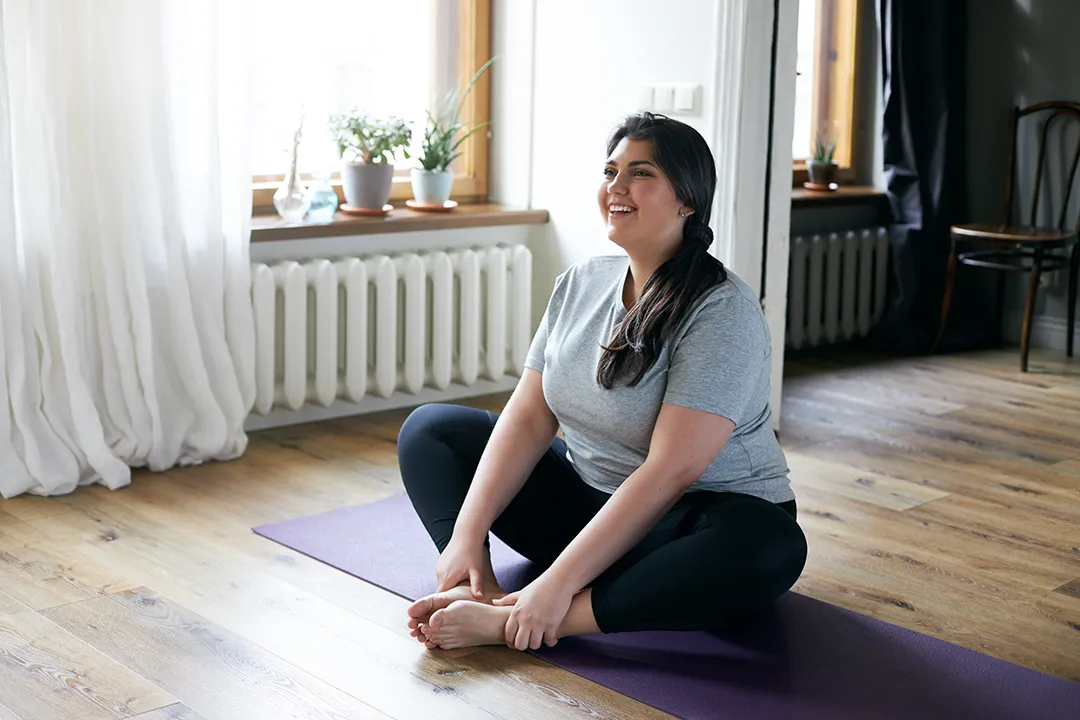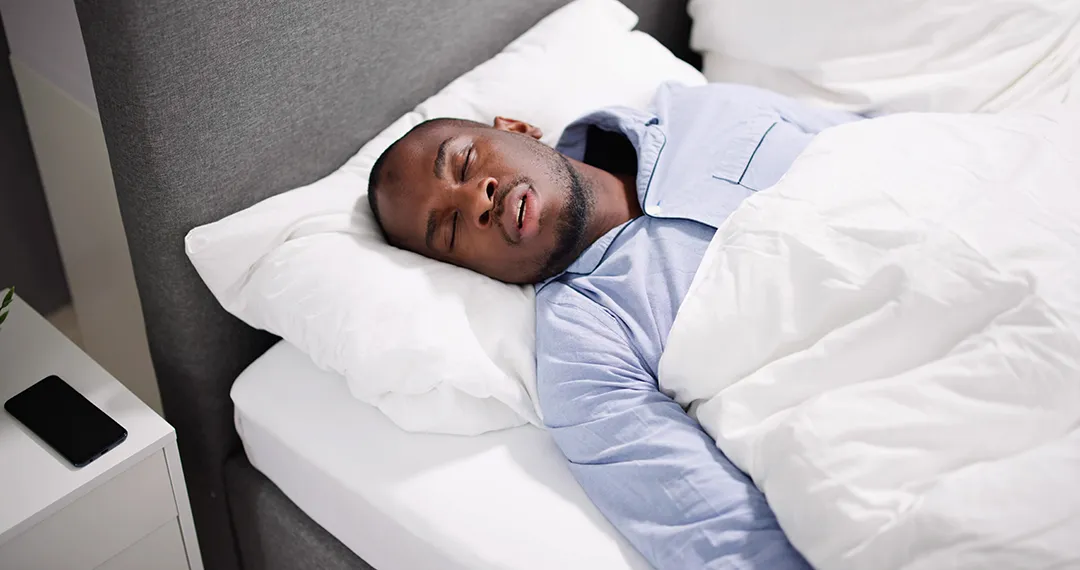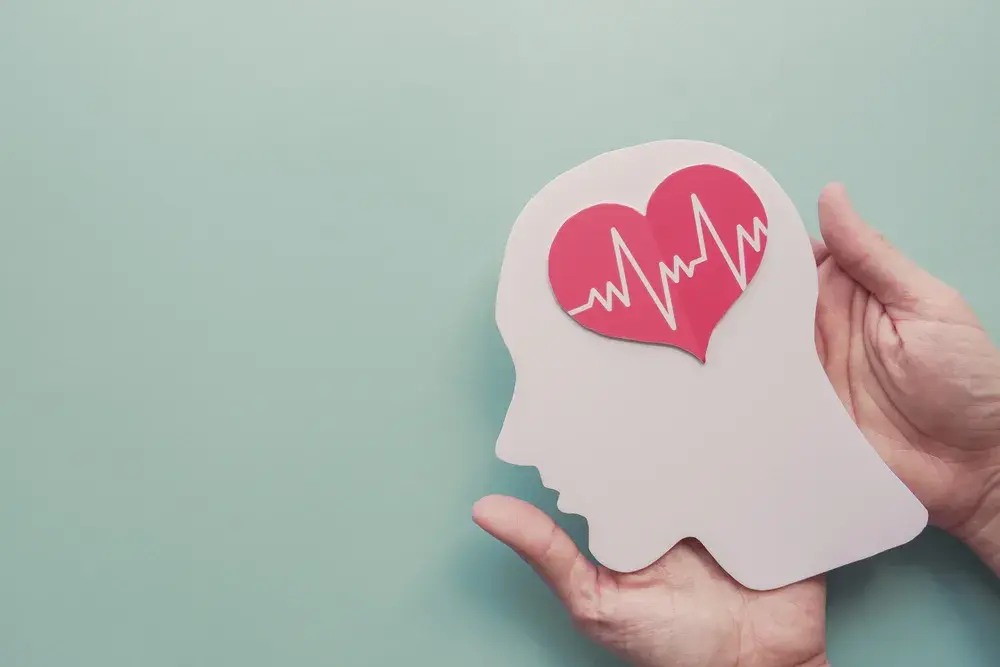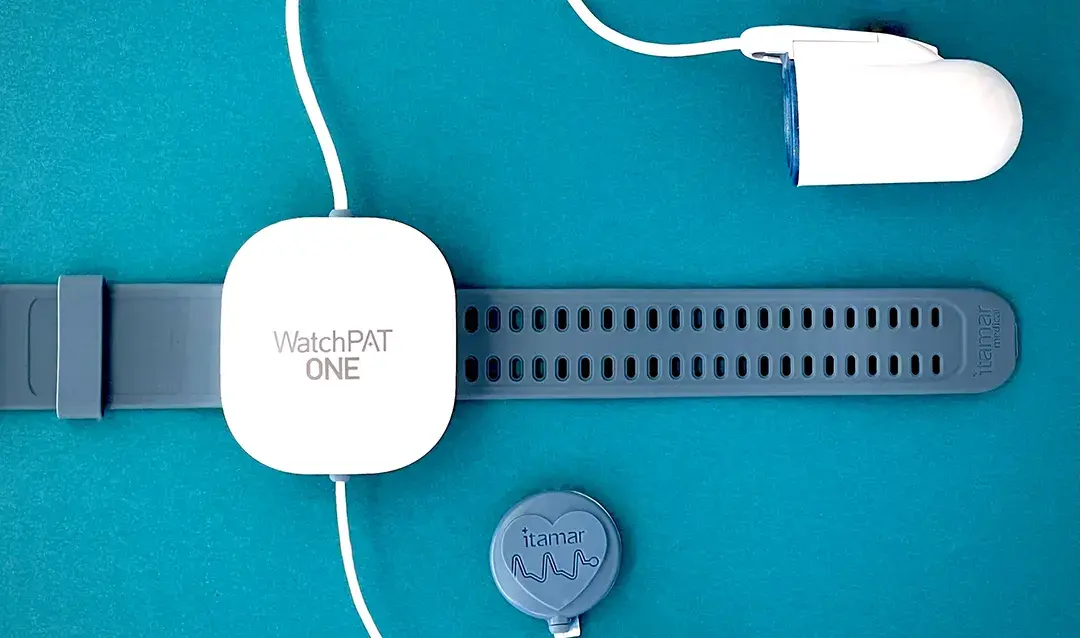Does Sleep Hygiene Help With Sleep Apnea?
No, but it may help with overall sleep. Here are our 8 best tips for better rest.

“Can sleep hygiene fix my sleep apnea?” Not really, but it can help your sleep overall.
I love it when patients ask me this question because it shows they're eager to make positive changes. Their motivations vary widely; some seek a general improvement in sleep quality, while others, aware of their sleep apnea diagnosis, aim to sidestep intimidating CPAP treatments.
Before we dive into details, let's clear something up: sleep hygiene can definitely help to improve your sleep overall, but it’s unlikely to fix your sleep apnea. Fortunately, If you have sleep apnea but can't tolerate wearing a CPAP, there are alternatives available.
Related: Do sleep apnea oral appliances work as well as a CPAP?
What is sleep hygiene?
Just so we’re on the same page here, sleep hygiene refers to practices and habits that promote longer and better quality sleep. These can include your habits leading up to bedtime, as well as behaviors throughout the day that can set you up for better sleep at night.
Is sleep hygiene actually effective?
That depends on your goal, and on what we define as sleep hygiene.
Research suggests that sleep hygiene practices have some level of effectiveness in reducing insomnia and promoting generally better sleep.1, 2 However, results within academic circles are mixed, in part because there is no medical consensus as to what practices fall under the “sleep hygiene” umbrella.
And when it comes to sleep apnea specifically, sleep hygiene practices are not a sufficient solution to replace sleep apnea treatment. There's no magical pillow you can buy or ideal nighttime routine that will resolve obstructive sleep apnea. It's a condition that requires medical treatment.
Fundamentally, obstructive sleep apnea is caused by the relaxation and collapse of your airway while you sleep, causing you to stop breathing for brief periods up to hundreds of times each night. Sleep hygiene practices do little if anything to address this problematic mechanism.
Learn More: Sleep Apnea Self Care Strategies
That said, sleep hygiene practices can help you get better sleep in conjunction with sleep apnea treatment, so let's look at specific practices to improve your nighttime rest.
Sleep Hygiene Tip #1: Greet the Sun
Did you know seeing sunlight first thing in the morning helps you feel sleepy at night? Your brain has a tiny part known as the "suprachiasmatic nucleus" that triggers your internal clock once it sees sunlight3.
Ideally, get that sunlight outdoors, not just through a window. If you wake up before the sun, try to get outdoors for at least a few minutes soon after sunrise.
Sleep Hygiene Tip #2: Be a Creature of Habit
The circadian rhythm is called a “rhythm” for a reason—it should happen to the same beat every day. If you're tossing and turning at night, inconsistent sleep times could be the culprit.
Biologically, your body doesn't know it's the weekend. Even if you're getting the same quantity of sleep, making up for late nights by sleeping in can make your sleep quality worse over time. Instead, stick to a consistent sleep schedule for optimal rest and energy.
How to Manage Sleep Hygiene as a Shift Worker
Having been in this position myself, I appreciate how difficult this advice can be when you work inconsistent hours. If possible, I recommend grouping shift-work days together so that you’re not alternating sleep schedules on a daily basis.
Sleep Hygiene Tip #3: Wind Down Wisely
While TV shows or scrolling through social media may seem relaxing, they actually stimulate the brain. Instead, aim for screen-free activities that put your mind on autopilot in the hour or two before bedtime.
Try coloring books, soothing music without lyrics, knitting, deep breathing or even reading a less engaging magazine. These practices can help you transition smoothly into a restful night's sleep.
Sleep Hygiene Tip #4: Get Comfortable
The goal here is to make your bedroom a sanctuary of sleep, signaling to your body that the time for rest has come. Here's how to make that happen:
Block out all light and noise. We’re talking complete darkness and silence. Use blackout shades if you need to. Why? Your eyes seeing light has a big influence on your regulation of melatonin (aka the sleepy hormone)4.
Keep your room cool. Perception of “cool” will, of course, differ from person to person, but use your judgment. The hot sleepers will thank me for this one.
Get a comfortable bed. If your pillows or mattress have you waking up with aches and pains, it’s time to make a change.
Avoid large meals and spicy food before bedtime. Either of these can make you feel uncomfortable, bloated, and potentially disrupt your sleep. Remember, the goal is to minimize any physical discomfort that could impact your sleep cycle.
Sleep Hygiene Tip #5: Limit Screen Exposure
Again, light impacts your melatonin levels and has a stimulating effect. And more specifically, research shows clearly that the blue light produced by screens is among the worst sleep quality offenders5.
If you absolutely must use your phone or some other screen in the hours leading up to sleep, use a blue light filter to adjust the color temperature of your screen. Most phones, tablets, and laptops come with this adjustable function. This won't solve the problem completely, as light of any kind at night will affect your melatonin production, but it's certainly a better alternative to the blue light of traditional screens.
Sleep Hygiene Tip #6: Eliminate Caffeine and Naps
My patients hate me for this one: “How will I survive my day without caffeine and naps!?”
First, let's remember the goal. We're looking to promote sleepiness at night and get higher quality rest so you'll be more awake during the day.
Yes, some of these changes may be difficult at first. But as your body accommodates, you’ll find that you feel far more energized day to day without the artificial support of caffeine and naps. Keep the faith.
So, what's the problem with naps and caffeine? Both affect adenosine—your body’s other sleepy chemical. Normally, adenosine builds up in your neural pathways throughout the day, making you sleepy by nighttime.
When you take a nap, your body clears out some of that built-up adenosine, meaning there's not enough of it built up by nighttime to support adequate rest at bedtime.
Caffeine works a bit differently, blocking your adenosine receptors so you don’t feel its effects. That's what creates the “crash” when caffeine wears off as all that adenosine binds back up to the receptors again.
By avoiding these adenosine disruptors during the day, you'll better promote your body's sleepy “signal” at night. Over time, this will lead to better quality sleep at night, so you won’t feel so dependent on daytime stimulants and naps just to function.
Sleep Hygiene Tip #7: Advice on Smoking and Drinking
We all know smoking and drinking aren't exactly health boosters, so I won't beat a dead horse here. But let's talk specifically on how nicotine and alcohol impact your sleep.
Alcohol disrupts normal sleep cycles. This often surprises patients, but it's true: the often beloved “nightcap” is actually a sleep disruptor. Yes, alcohol may induce sleepiness initially. But as it wears off, your sleep cycle gets interrupted.6
Nicotine disrupts your normal circadian rhythm. As a stimulant, the nicotine found in tobacco products makes it harder for you to fall asleep and reduces the amount of time you spend in certain sleep cycles.7
How Smoking and Drinking Affect Sleep Apnea
Beyond their impacts on your sleep hygiene more generally, both alcohol and nicotine also exacerbate obstructive sleep apnea. Alcohol reduces muscle tone in your upper airway8, while smoking increases swelling around your airway. The result? Both habits make your airway more prone to collapse, increasing the likelihood of apneic events.
Related: What happens to your body during a sleep apnea episode?
Sleep Hygiene Tip #8: Start Exercising, But Not Before Bed
Starting to exercise can be difficult. It’s hard to know where to start, what exercises to do, which program works best, the list goes on. My advice? Forget all that and start as the person you are, not the person you think you have to be.
You don’t have any equipment or a gym? No problem! Simply go for a walk.
You can only walk for 10 minutes every third day? That's a fine place to start.
Being intimidated by everything you can or should be doing often keeps people away from doing something. And, in my experience, people who start small often find the motivation to progress.
Ideally, you’ll get to a place where you can practice a form of exercise that is strenuous enough to make you feel more tired at night. Running, lifting weights, or playing tennis are all great examples.
That said, beware of doing any of these too close to bedtime - it can have the opposite effect of too much stimulation in the hours before sleep.
What to Do When You Can't Fall Asleep
It can take a few weeks of sticking to the same routine to see a difference, so consistency and patience are key. In the meantime, though, I understand how frustrating it can be to stare at the ceiling, wide awake—so let's talk through a few immediate tips to help you get better rest:
Don’t resort to screens to keep you occupied until you’re completely exhausted. That means if you're reading this from bed in the middle of the night, it's time to put the phone away.
Don’t look at the clock. That will just make you more anxious, which won't promote sleepiness.
Stop trying to fall asleep, especially if waiting for dreamland has you feeling agitated. The frustration will only work you up even further, so if you've passed the 20 minute mark, it's time for a different strategy.
Do something boring. Read a physical book. Work on a sudoku puzzle or crossword. Complete a boring, off-screen chore. The goal is to find that "autopilot mode" while avoiding screens or strenuous activity. Then, try again when the sleepy feeling sets in.
Repeat the cycle, and eventually your body will get the point—as long as you’re implementing other best practices for nighttime sleepiness.
When to Seek Treatment for Sleep Issues
Feeling the affects of better sleep hygiene will take time. But if you’ve implemented these best practices, you've given them a few weeks to see results, and you're still struggling with sleep, it may be time to seek medical support for deeper sleep issues.
If you have untreated sleep apnea, for example, sleep hygiene practices alone won't get rid of symptoms like daytime exhaustion, morning headaches, or nighttime sleep disruptions.
Related: Do I have sleep apnea? Find out with a free, 5-minute assessment.
Sleep apnea and other sleep disorders are medical conditions that require specific treatment. So while sleep hygiene can go a long way to improve daytime alertness and nighttime rest, they aren't a supplement for getting the medical support you need.
Murawski B, Wade L, Plotnikoff RC, Lubans DR, Duncan MJ. A systematic review and meta-analysis of cognitive and behavioral interventions to improve sleep health in adults without sleep disorders. Sleep Med Rev. 2018 Aug;40:160-169. doi: 10.1016/j.smrv.2017.12.003. Epub 2017 Dec 29. PMID: 29397329. Available from: https://pubmed.ncbi.nlm.nih.gov/29397329/
Chung KF, Lee CT, Yeung WF, Chan MS, Chung EW, Lin WL. Sleep hygiene education as a treatment of insomnia: a systematic review and meta-analysis. Fam Pract. 2018 Jul 23;35(4):365-375. doi: 10.1093/fampra/cmx122. PMID: 29194467. Available from: https://pubmed.ncbi.nlm.nih.gov/29194467/
Blume C, Garbazza C, Spitschan M. Effects of light on human circadian rhythms, sleep and mood. Somnologie (Berl). 2019 Sep;23(3):147-156. doi: 10.1007/s11818-019-00215-x. Epub 2019 Aug 20. PMID: 31534436; PMCID: PMC6751071. Available from: https://pubmed.ncbi.nlm.nih.gov/31534436/
Gooley JJ, Chamberlain K, Smith KA, Khalsa SB, Rajaratnam SM, Van Reen E, Zeitzer JM, Czeisler CA, Lockley SW. Exposure to room light before bedtime suppresses melatonin onset and shortens melatonin duration in humans. J Clin Endocrinol Metab. 2011 Mar;96(3):E463-72. doi: 10.1210/jc.2010-2098. Epub 2010 Dec 30. PMID: 21193540; PMCID: PMC3047226. Available from: https://pubmed.ncbi.nlm.nih.gov/21193540/
Shechter A, Kim EW, St-Onge MP, Westwood AJ. Blocking nocturnal blue light for insomnia: A randomized controlled trial. J Psychiatr Res. 2018 Jan;96:196-202. doi: 10.1016/j.jpsychires.2017.10.015. Epub 2017 Oct 21. PMID: 29101797; PMCID: PMC5703049. Available from: https://pubmed.ncbi.nlm.nih.gov/29101797/
Colrain IM, Nicholas CL, Baker FC. Alcohol and the sleeping brain. Handb Clin Neurol. 2014;125:415-31. doi: 10.1016/B978-0-444-62619-6.00024-0. PMID: 25307588; PMCID: PMC5821259. Available from: https://www.ncbi.nlm.nih.gov/pmc/articles/PMC5821259/
Simou E, Britton J, Leonardi-Bee J. Alcohol and the risk of sleep apnoea: a systematic review and meta-analysis. Sleep Med. 2018 Feb;42:38-46. doi: 10.1016/j.sleep.2017.12.005. Epub 2018 Jan 3. PMID: 29458744; PMCID: PMC5840512. Available from: https://www.ncbi.nlm.nih.gov/pmc/articles/PMC5840512/
Jaehne A, Loessl B, Bárkai Z, Riemann D, Hornyak M. Effects of nicotine on sleep during consumption, withdrawal and replacement therapy. Sleep Med Rev. 2009 Oct;13(5):363-77. doi: 10.1016/j.smrv.2008.12.003. Epub 2009 Apr 2. PMID: 19345124. Available from: https://pubmed.ncbi.nlm.nih.gov/19345124/




